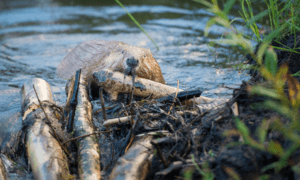River HEALTH Clackamas River
River Health
Water quality in the Clackamas River is considered very good to excellent compared to other rivers in the State and has withstood pressures from human impacts and natural disturbances seemingly well. However, urban development and human activities continue to affect the water-quality of the Clackamas River and its tributaries.

Although overall the Clackamas River has very good water quality, analysis of temperature and bacteria data have indicated that parts of the Clackamas River do not meet state water quality standards at all times. Four stream segments are listed on the 2002 Oregon 303(d) list for temperature and eight stream segments also violate the E. coli bacteria criteria for water quality. To learn more about the Department of Environment Qualities (DEQs) Total Maximum Daily Maximum Loads for the Clackamas Subbasin go to see https://www.oregon.gov/deq/FilterDocs/chpt6clackamas.pdf
Clackamas USGS gauges
There are three water quality monitoring stations on the Clackamas River at Carter Bridge, River Mill, and Oregon City. These monitoring stations continuously log pH, conductivity, dissolved oxygen, turbidity, and temperature. The River Mill and Oregon City sites also record chlorophyll and streamflow. The water quality data from these sites can be accessed via the web at https://or.water.usgs.gov/clackamas/monitors/.
Many stakeholders in the Clackamas River Watershed monitor water quality to meet regulatory requirements and to better understand the health of the watershed. For more information, reports, studies, and technical data for the basin go to https://www.clackamasproviders.org/technical-data/
